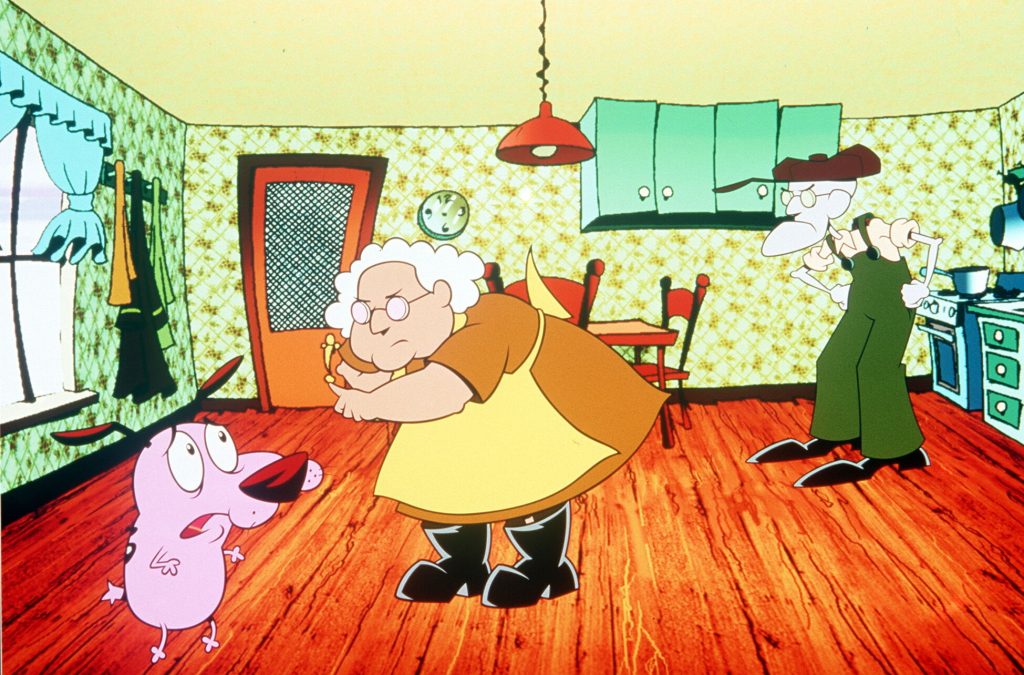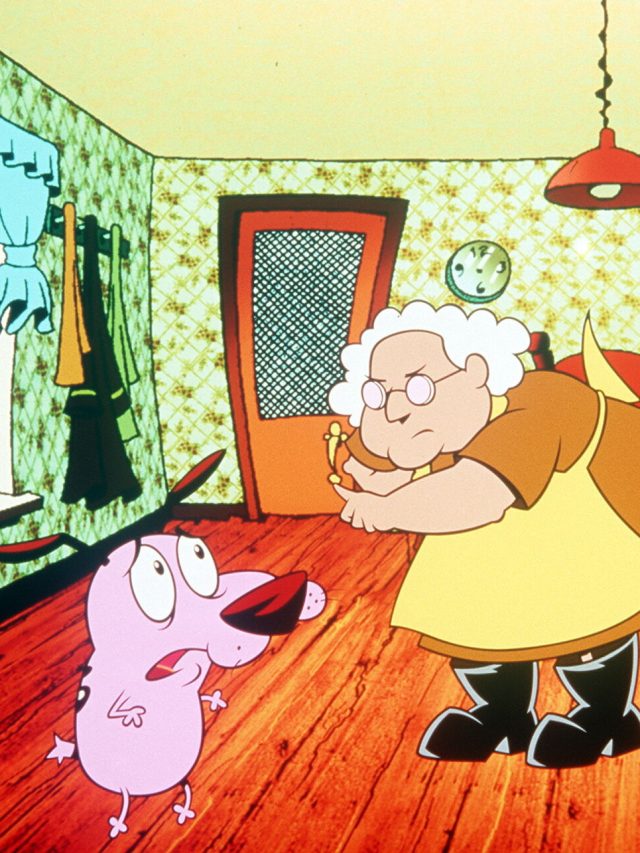Animal actors have been in Hollywood for decades now. From eating ‘Breakfast At Tiffany’s’ (1961), or solving the mysterious clues after ‘Hangover’ (2009 – 2013), animals have always brought us happiness. Millennials might remember ‘Hachi: A Dog’s Tale’ or ‘101 Dalmatians’. But one TV dog that has always brought us (as a child) happiness, laughter, and absurdly enough a hint of horror is ‘Courage – The Cowardly Dog’. The purple (jury still out) dog would find himself as the sole observer and later a hero in nefarious plots. Despite his name, courage had always been dubbed as a cowardly dog. But mirroring the humans, he skillfully conquers his adversity, saving lovely grandma ‘Muriel’ from astounding situations.
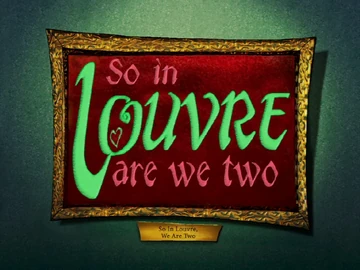
One episode that comes to mind is ‘So in Louvre Are We Two’ or more frequently ‘Art Attack’ to different regional audiences. The episode is a perfect mix between Courage’s endearing courage and the derivative plot from ‘Night At the Museum’. Courage, Eustace, and Muriel visit the Louvre, to visit Muriel’s long lost twin – ‘The Mona Lisa’. A celestial phenomenon breathes life into the museum artwork, coming alive for a while. The shenanigans that ensue, suffice to say, DELIGHTFUL. But did you clock the following famous artworks in the episode?
Cassius Marcellus Coolidge – Dogs Playing Poker
Dogs Playing Poker doesn’t refer to a single painting but a collection of 18 paintings united by the anthropomorphized dogs playing pokers; a men’s den where cigars and royal flushes are a regime. These paintings (1894 – 1910) are a prime example of kitsch. However, the painting featured in the animated show is reminiscent of either ‘Poker Game’ (1894) or ‘Waterloo’ (1906). Even though ‘Courage’ would make a perfect fit in the painting, he was banished from the club by envious dogs jealous of his poker prowess.
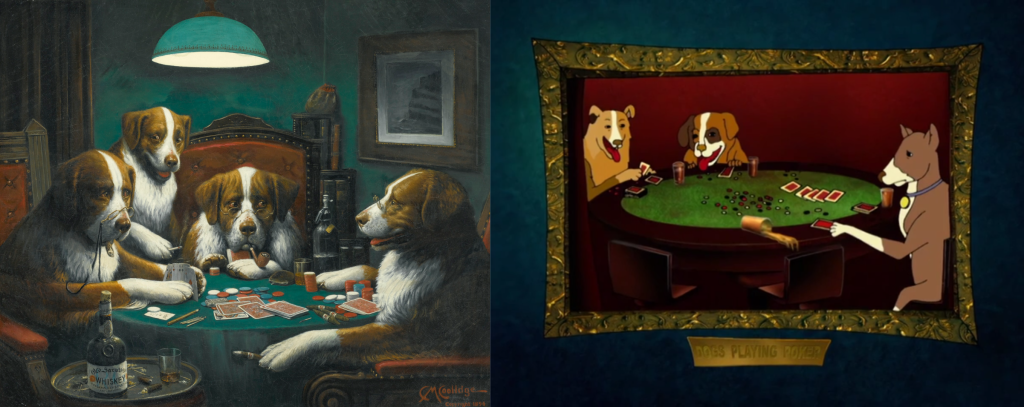
Vincent Van Gogh – Sunflowers
Van Gogh made two still-life painting series featuring sunflowers. The first one; the Parisian Sunflowers features two on the floor. In 1888, he painted yet another version, this time showcasing them as a bouquet in a vase. The only connection was his friend Paul Gaugin, who snatched two Paris paintings. The second collection was acquired by both galleries and private collectors. The painting featured in the ‘Courage’ episode is an imitation of ‘Sunflowers (F376)’ which currently hangs at the Museum of Fine Arts, Bern. The painting solidifies his love for the colour yellow, which rose to prominence after innovations in dyes and natural colours.
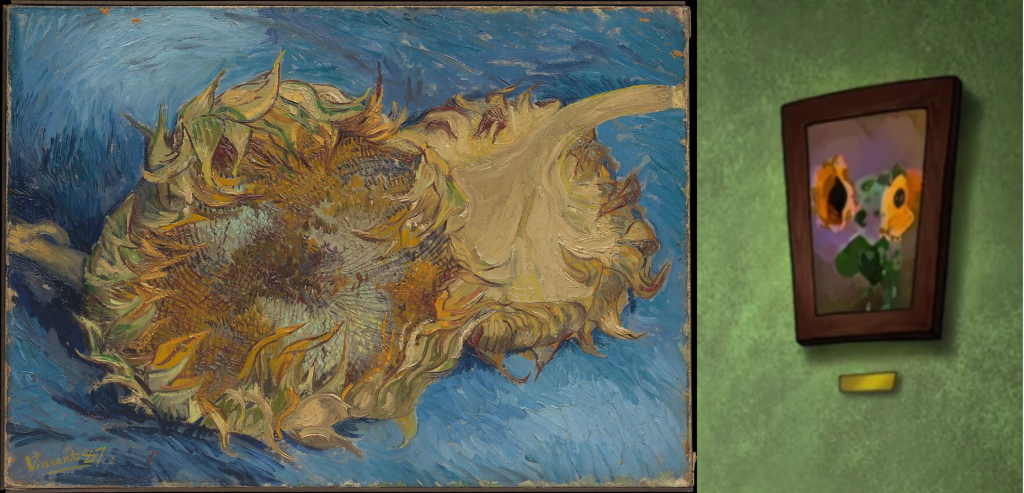
Vincent Van Gogh – The Starry Night
After Van Gogh suffered a mental breakdown, he was voluntarily admitted to Saint-Paul-de-Mausole lunatic asylum. It is said that he drew ‘The Starry Night’ (1889) as a landscape out of his window facing east. He has depicted a June day but morphed it to depict a night sky. The painting has a fluidity to it, with no straight lines. These curves connote a fluid motion. The cypress was heavily featured in the works he produced out of the asylum.
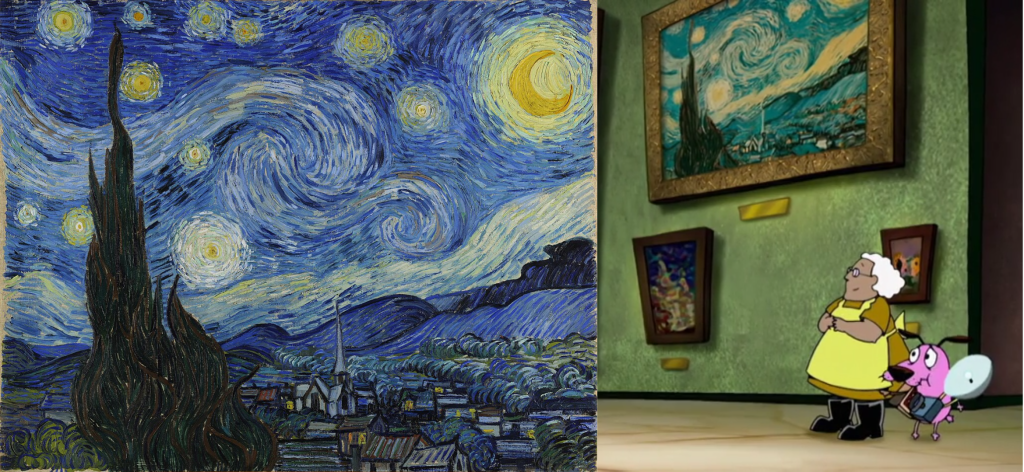
Leonardo Da Vinci – Mona Lisa
‘Mona Lisa’ is empirically the most talked about, visited, popularized, and parodied artwork of all time. Mona Lisa was based on Lisa Gherardini and made during the Italian Renaissance. It is seldom said that the ‘Mona Lisa’ was a self-portrait of Leonardo da Vinci and apparently ‘Muriel’ too. The painting is the MacGuffin, the only reason why the family visits the Louvre. Hence she is recognised as the main character of this particular episode.
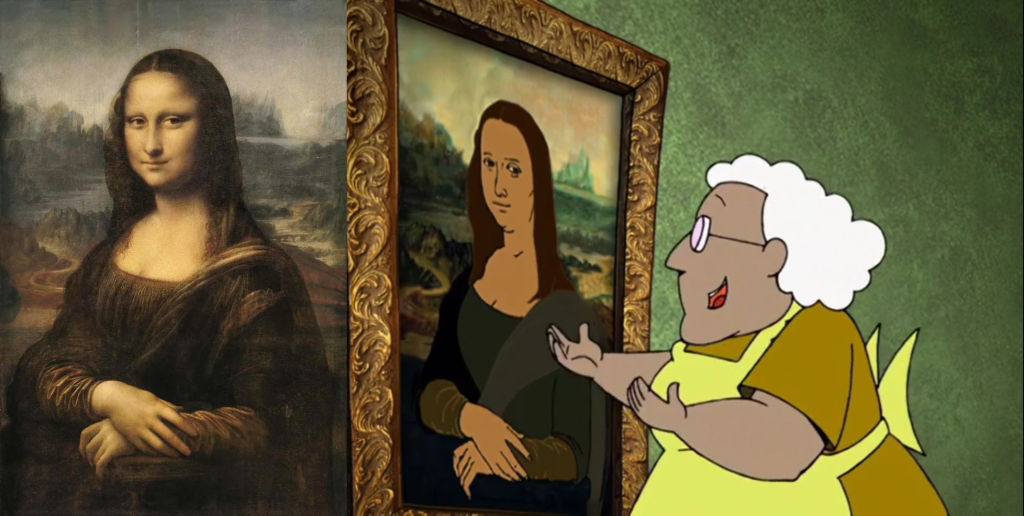
Edvard Munch – The Scream
‘The Scream’ is an apt depiction of German Expressionism. Made in 1893, the painting depicts the everyday anxiety of human existence. It is alternatively known as ‘Skrik’ (Scream in Norwegian) and ‘Der Schrei der Natur’ (The Scream of Nature in German). It only makes sense that it is featured in this episode. In his signature move, the dog parallels the painting’s protagonist.
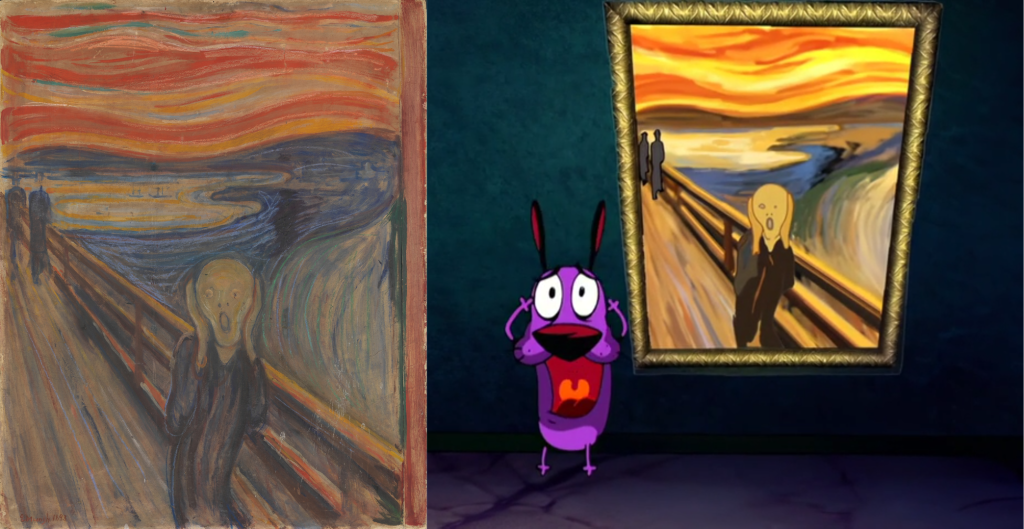
Georges Seurat – A Sunday Afternoon on the Island of La Grande Jatte
The father of pointillism, Georges Seurat’s (1884 – 1886) painting ‘A Sunday Afternoon on the Island of La Grand Jette’. The detailed painting depicts an average bourgeois Sunday Parisian afternoon. The relaxing banks make for the best date location for the ‘Mona Lisa’ and ‘The Thinker’. Unfortunately, ‘no dogs allowed’ on the beach.
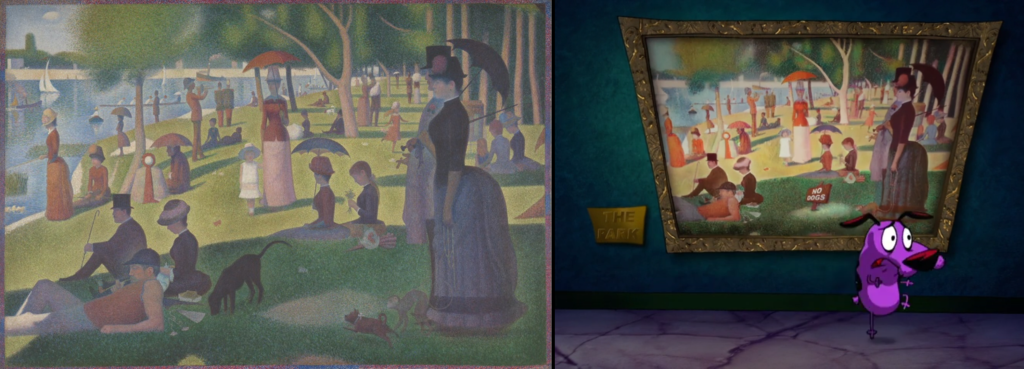
Auguste Rodin – The Thinker
Our heroine has found ‘Mona Lisa’, her hero for the episode in the form of ‘The Thinker’. Some may be intimidated by his bulging muscles, but not ‘Eustace’, who eventually replaces him. Unfortunately, the romance is short-lived as his character flaw is overthinking. The bronze sculpture of ‘Le Penseur’ was a masterpiece by Auguste Rodin created in 1904. The sculpture is meant to represent deep thought, introspection, and contemplation. In the modern world, their significance cannot be underestimated. It is also a personification of philosophy.
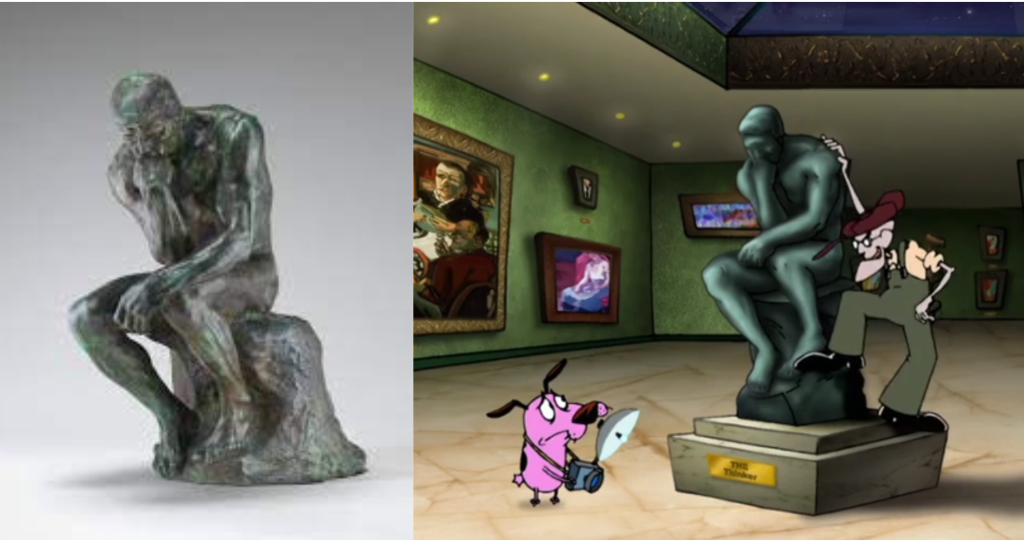
Auguste Rodin – The Kiss
Another influential sculpture, ‘The Kiss’ or ‘Le Baiser’ by Auguste Rodin is featured in this episode. The sculpture invokes tension which is intertwined with erotic spectacle. As soon as its inception in 1882, the sculpture was locked behind doors only to be seen via private invitations. The reason – It was too controversial. The sculpture depicts the love affair between medieval noblewoman ‘Francesca da Rimini’ with her husband’s younger brother Paolo Malatesta’. In the episode, ‘Paolo’ is hit by Cupid’s arrow and develops an affinity towards ‘Mona Lisa’ creating an ultimate trope of love triangles.
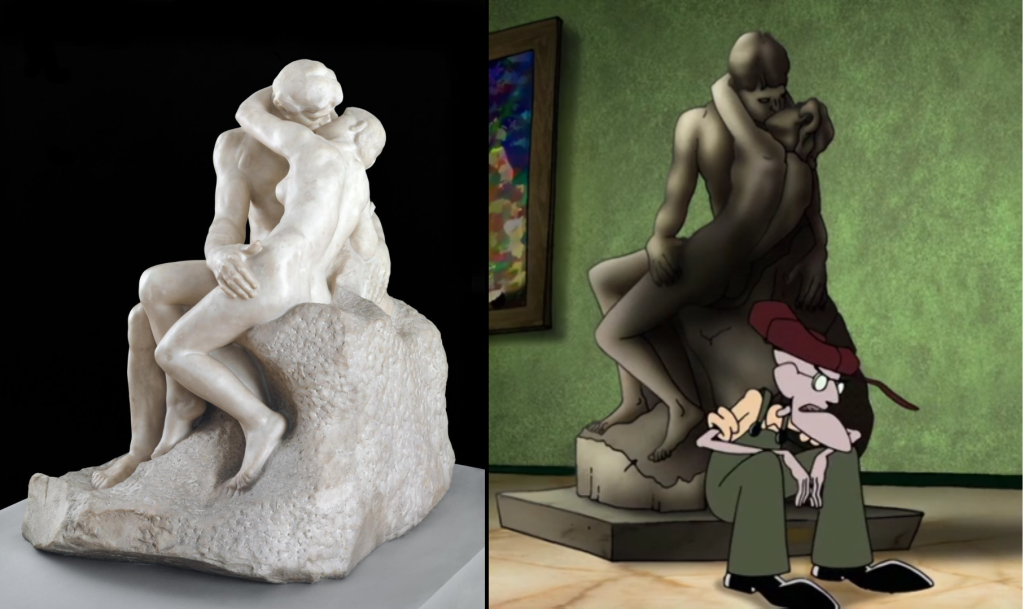
Grant Wood – American Gothic
Grant Wood’s 1930 portrait painting, ‘American Gothic’ is an ode to the American Midwest. The father-daughter duo (Wood’s dentist and sister) stand in front of a house built in the American Gothic Architecture style. The painting defines the essence of rural America. Since the show, ‘Courage The Cowardly Dog’ uses El Paso, Texas as their setting, this painting swaps the original house for the family’s house. ‘Courage’ picks up ‘Muriel’ and runs inside the painting towards their house leaving the father and daughter surprised. Come to think of it, even ‘Muriel’s’ house is another paragon of Gothic Architecture.
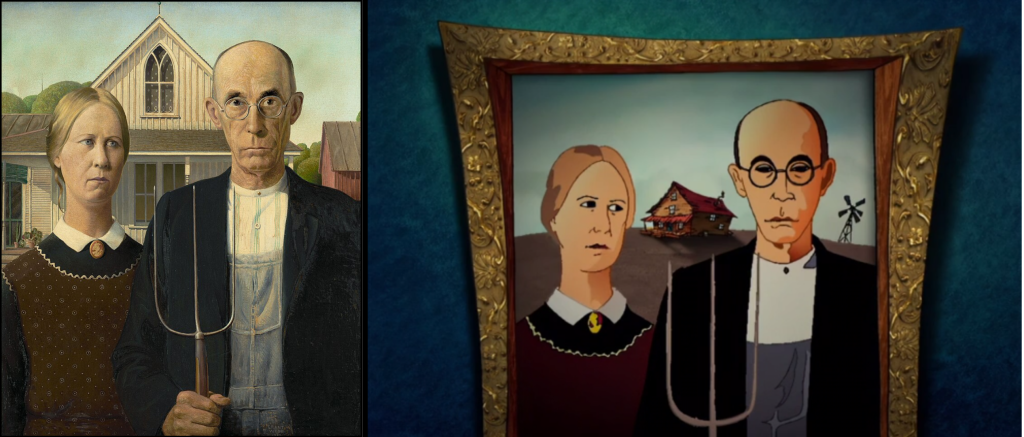
Frans Hals – The Lute Player
‘The Lute Player’ is another painting displayed at the Louvre in the animation’s universe. The jury is still divided on the year of inception, with both 1623 and 1624 assumed to be correct. The jury reunites in appreciating Frans Hals’ loose brush strokes. The painting is alternatively titled ‘Jester with a Lute’. The painting portrays a jester playing the lite, his eyes transfixed at someone (now thought to be his compatriot).
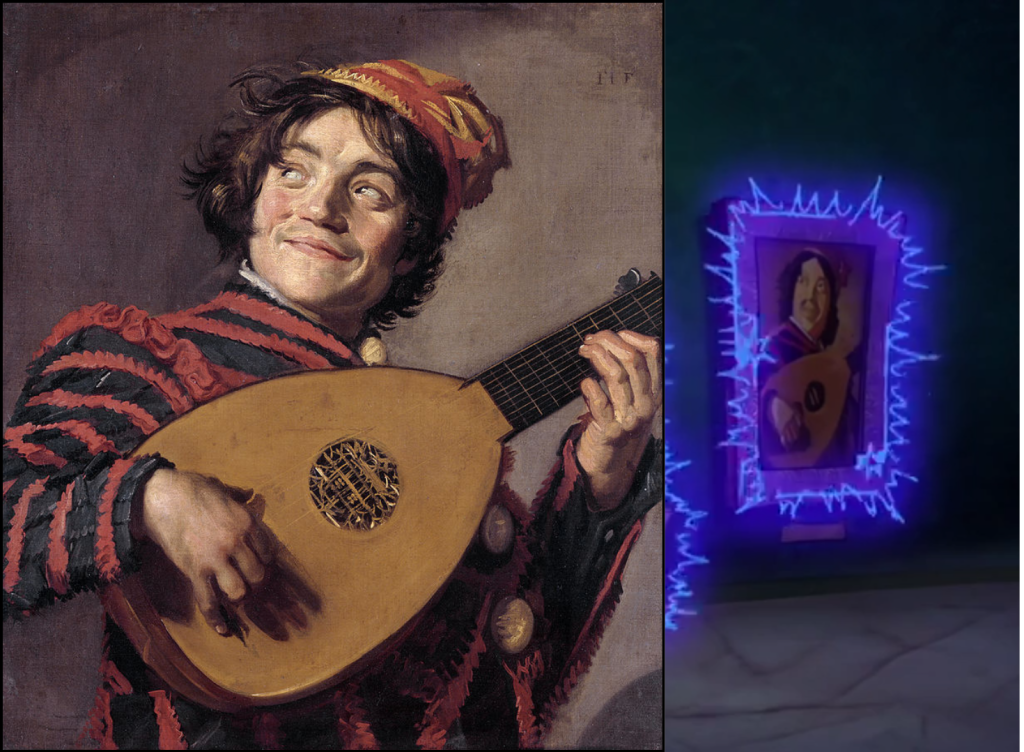
Edward Hopper – Nighthawks
No date is complete without late-night cravings. At least ‘Courage The Cowardly Dog’ has solidified this idea. In this magnificent display of light and shadow in the 1942 painting, ‘Nighthawks’, our protagonist sits at the diner, neck deep in their menu. Edward Hopper has undoubtedly added to the dichotomy of city life – the reverberating streets in the day and the deserted yet illuminated urban landscape.
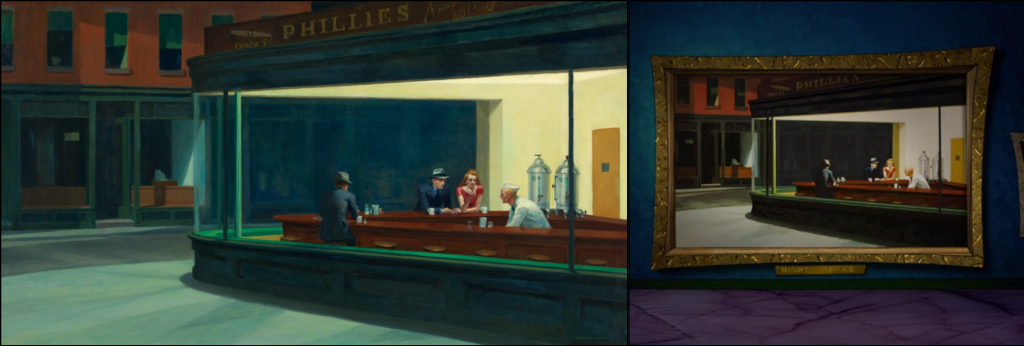
Salvador Dali – The Persistence of Memory
Salvador Dali’s 1931 painting ‘The Persistence of Memory’ acts as another date location for ‘Mona Lisa’ and the ‘Thinker’. The painting features melting clocks akin to how Camembert cheese melts. The painting is his commentary on the transient nature of time. It also affirms his infatuation towards death, decay, and the passage of time. We believe that Auguste Rodin’s ‘The Thinker’ would have fit right into it.

Image Courtesy – The New York Times

Hi Ya’ll !!
I love writing about pop culture and all things queer.
Sub Editor at Abir Pothi

